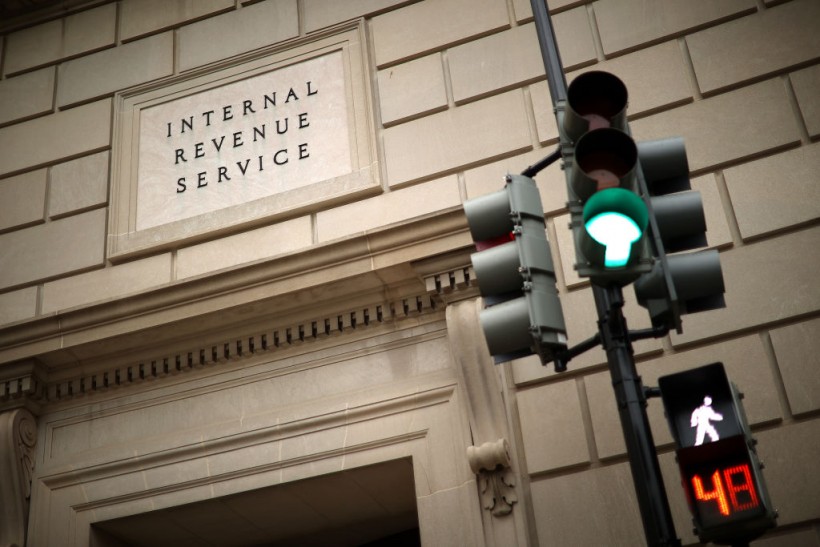Now that the IRS is about to start sending the third stimulus check, we'll tell you what you need to know about tracking its status. With President Joe Biden having signed the $1.9 trillion stimulus bill into law, the first round of the third stimulus check of $1,400 will be shipped out to qualifying Americans within days. So, if the Internal Revenue Service (IRS) releases the first funds, how long will you have to wait before you can start tracking your payment? Is there a need to track it?
Track your third stimulus check through the IRS tool

WASHINGTON, DC - APRIL 27: The Internal Revenue Service headquarters building appeared to be mostly empty April 27, 2020 in the Federal Triangle section of Washington, DC. The IRS called about 10,000 volunteer employees back to work Monday at 10 of its mission critical locations to work on taxpayer correspondence, handling tax documents, taking telephone calls and other actions related to the tax filing season.
The IRS quickly set up an online tracking portal after receiving the first check. Before enabling the tool, the U.S. Treasury had already sent out checks for the second. Although the excitement of searching your bank account for a direct deposit or chasing down the mail carrier might be appealing, the stimulus check monitoring tool is the only real communication and assurance that the IRS processed your payment, whether you're being sent a paper check or an EIP card, and when it may come.
The tool also informs you if there's a problem, which might cause you to miss out on your stimulus payment. To fix it, you may need to give more details to the IRS. Since the third stimulus check arrives during tax season, the data will reveal whether the IRS used your 2019 or 2020 returns, as well as whether it accurately counted any of your dependents. If not, you will need to file for a catch-up payout in the future. Here's what you need to know about it, as per CNET.
Read also: Third Stimulus Check: Are You a Recipient?
IRS's Get My Payment: What to know
We don't know when the IRS will upgrade its Get My Payment tracking tool, but it's expected to be only after the third round of stimulus checks are sent out.
As for the first two payments, we expect the details to refresh once a day. If the third check tracking app is fully operational, enter your Social Security number, date of birth, street address, and ZIP code. The tool will then show a message containing information about your check, including whether it was received, if the payment was processed, and the date it was released. It will also alert you if the provider is unable to assess your location at this time.
When will your $1,400 stimulus check arrive?
On March 6, Biden reported that checks would begin to be released this month. The third stimulus check could start arriving in less than a week, based on what we saw in the second stimulus check. The IRS will send checks to taxpayers who have existing direct deposit records on file. According to The Penny Hoarder, many who file a paper tax return or do not have direct deposit would definitely have to wait at least a few weeks longer.
The IRS has allowed taxpayers to monitor their checks using the Get My Payment app on its website for the past two rounds. The third-round tracker isn't available yet.
Read also: Stimulus Bill Won't Cancel Student Loan Faster
How the IRS will determine your third stimulus check
Not all in the United States may be eligible for the entire $1,400 stimulus package, and others will not be qualified at all. Your adjusted gross income (AGI), which can be found on your most recent tax return, can be used by the IRS to assess your eligibility. It's a figure derived from subtracting deductions from the net gross revenue, such as contributions to a retirement account, HSA contributions, and student loan interest. Here are the figures you'll need to see whether you qualify for the third stimulus check, as well as where to look for them, as per Business Insider.
Only those earning less than a specific AGI will be eligible for a full stimulus check. Here are the income limits you'll need to fall within to receive the full $1,400 per person in your household (including children and dependents):
- For single filers, an AGI of $75,000 or less is needed.
- For head-of-household filers, an AGI of $112,500 or less is needed.
- For married joint filers, an AGI of $150,000 or less is required.
People with marginally higher incomes would be eligible for a partial stimulus check per household member. To earn a portion of the check, the AGI must be less than:
- In the case of single filers: An AGI of $80,000 or less is required.
- For head-of-household filers, an AGI of $120,000 or less is needed.
- For married joint filers, an AGI of $160,000 or less is required.
Read also: Stimulus Check: The Good, Bad Side that Would Surprise You









